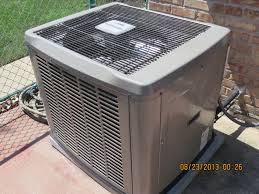Benefits Of Central Air Conditioner In Your Home
A central air conditioner brings peace of mind. Instead of worrying about how to cool your home when the meteorologist predicts skyrocketing heat, you can comfortably focus on what you enjoy the most about summer. Because an A/C is a large investment in your home that requires proper sizing and installation, it is always best to work with a licensed HVAC contractor.
This video provides information on how a central air conditioner works and offers troubleshooting tips to assist you in diagnosing and repair.
Central Air Conditioning
Central air conditioners have two separate components: the condenser and the evaporator. The condenser unit is usually located outside the house on a concrete slab. The evaporator coil is mounted in the plenum or main duct junction above the furnace.
Most central air conditioners are connected to a home’s forced-air distribution system. Thus, the same motor, blower, and ductwork used for heating are used to distribute cool air from the air conditioning system. When a central air conditioner is operating, hot air inside the house flows to the furnace through the return-air duct. The hot air is moved by the blower across the cooled evaporator coil in the plenum and is then delivered through ducts to cool the house. When the air conditioner works but the house doesn’t cool, the problem is probably in the distribution system.
Both the evaporator and the condenser are sealed. Therefore, a professional service person should be called for almost any maintenance other than routine cleaning. Central air conditioners should be professionally inspected and adjusted before the beginning of every cooling season. However, don’t let your maintenance end with this annual checkup. While there aren’t many repairs you can make yourself, there are specific maintenance procedures you can follow to keep your system operating at peak efficiency.
Central air conditioners circulate cool air through a system of supply and return ducts. Supply ducts and registers (i.e., openings in the walls, floors, or ceilings covered by grills) carry cooled air from the air conditioner to the home. This cooled air becomes warmer as it circulates through the home; then it flows back to the central air conditioner through return ducts and registers. To learn how central air conditioners compare to other cooling systems.
TYPES OF CENTRAL AIR CONDITIONERS
In a split-system central air conditioner, an outdoor metal cabinet contains the condenser and compressor, and an indoor cabinet contains the evaporator. In many split-system air conditioners, this indoor cabinet also contains a furnace or the indoor part of a heat pump. The air conditioner’s evaporator coil is installed in the cabinet or main supply duct of this furnace or heat pump. If your home already has a furnace but no air conditioner, a split-system is the most economical central air conditioner to install.
In a packaged central air conditioner, the evaporator, condenser, and compressor are all located in one cabinet, which usually is placed on a roof or on a concrete slab next to the house’s foundation. This type of air conditioner also is used in small commercial buildings. Air supply and return ducts come from indoors through the home’s exterior wall or roof to connect with the packaged air conditioner, which is usually located outdoors. Packaged air conditioners often include electric heating coils or a natural gas furnace. This combination of air conditioner and central heater eliminates the need for a separate furnace indoors.
Importance Of A Central Air Conditioning Filter
The filter that you have for your central air conditioning system is as important as any other component that makes up the entire set-up. Even though it is probably the cheapest component of your entire central air system, the filter can go a long way to making your unit run as effectively and efficiently as possible. Call (713) 812-7070 us for your home service and repair needs.
For more related article and info visit https://www.abacusplumbing.net/category/air-conditioning/
